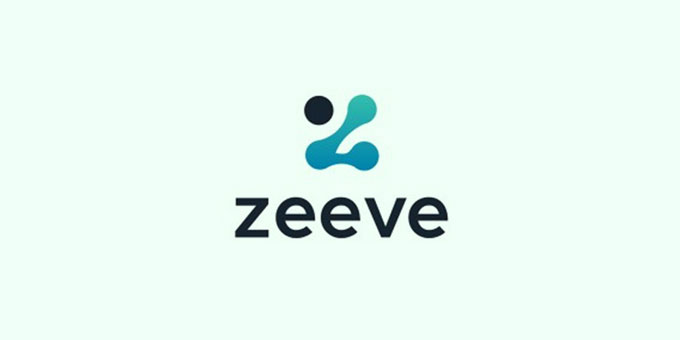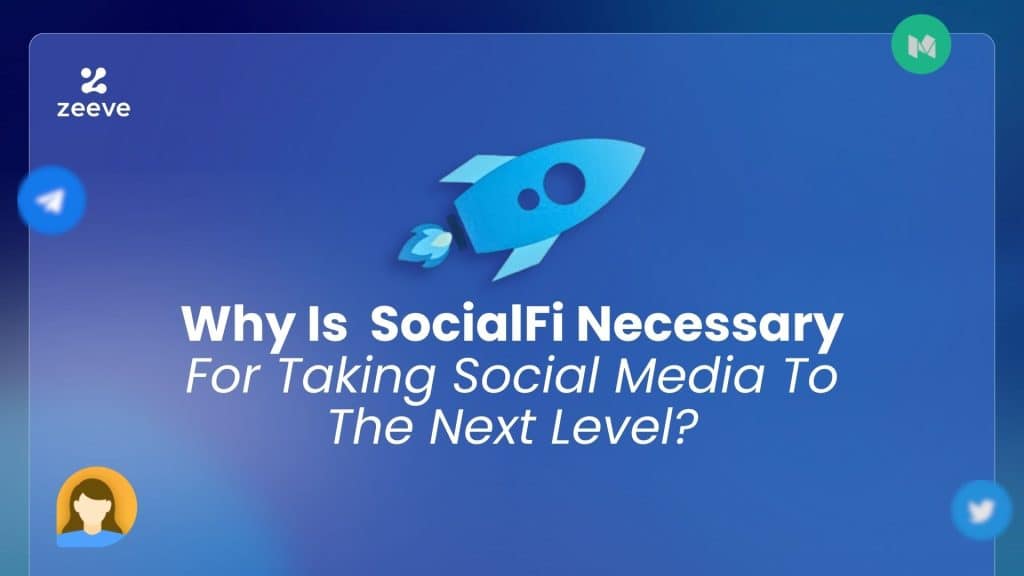As per statistics, out of 7 B people in the world, a staggering 5.07 B people actively spend close to 140 minutes daily on social media. During this time span, they actively engage with numerous products, advertisements and many other things on social media. At one end of the spectrum, the platforms and creators benefit from such an activity but on the other side of the spectrum, the users, which are the major chunks contributing to the growth of the social platforms and their content creators couldn’t freely exercise control over their data, speech and their ability to monetize their participation. However, that narrative is changing when social media is fusing with decentralized finance to launch a new concept known as SocialFi.
What is SocialFi?
SocialFi is a portmanteau of social media that blends two concepts together: Social Media and Decentralized Finance. To put that into perspective, if you have used Patreaon, you will understand that Patreon acts as a platform gratifying the Patreon ecosystem and the content creators. For example, the content creator sets aside a value-generating segment of the content as paid and demands users to pay for the access.
Such a practice might sound a bit off, right? But, why do content creators do that?
The content creators are forced to practice this because the platform introduces unpredictable algorithmic updates and uncontested revenue sharing models making them as marketing engines, which dilutes creators’ interest. As a result, the creators are forced to deploy such revenue models where they can remain sustainable for long through a forced subscription model, even at the cost of diluting the user’s interest. But SocialFi changes that equation by allowing the creators to directly connect with the users, bypassing restrictive hurdles imposed by centralized platforms and keeping users in the revenue equation as equal partners.
How SocialFi Works To Achieve That?
SocialFi uses the DAO model and tokens for achieving this. DAOs or decentralized Autonomous Organizations take charge of the platform governance and prevent developers from altering any line of code that could deincentivize creators.
How?
For example, a developer might program an algorithm in such a way that it can throw away creators from the search and visibility section on a Web 2 social platform. But in SocialFi, the DAO is in full control. So, even if a developer wants to do that, he/she will have to get that approved by the DAO, in which the members are creators and users along with developers.
Hence, allowing creators to exercise equal control over their content and directly communicate with the users. As a result, they can incentivize/reward the users/subscribers directly from their revenue stream since they are not dependent on the platform to bring them to their content; which results in revenue.
Moreover, the use of cryptocurrencies and smart-contracts ensure the creators directly pay to their community and fandom for their support encouraging their participation.
Why is SocialFi Needed?
Decentralization
Most of the traditional Web 2 platforms have a murkier track record. For example, platforms like Facebook have abused subscribers’ data as per the Cambridge Analytica Scandal. SocialFi decouples the practice of storing the data on a single server. On the contrary, the users have complete control over their data and they can choose how they wish to monetize their data. Likewise, the creators can also directly interact with the users and post contents irrespective of a forced filter imposed on them while using traditional Web 2 social platforms.
Censorship
Censorship is a necessary evil. However, it should not have a one-size-fits- all approach. For example, most of the OTT platforms and social media contents are getting censored. China is an imminent example to quote here. In China, there’s very little freedom of speech exercised. SocialFi can help balance the same by decentralizing the on-chain data. To put that simply, some of the contents on the given OTT platforms ought to be censored as shown in the image below.
These are perfect. But censoring against the general view of the state and its political atmosphere suppresses the right to speak against injustice. For example, in China, the Chinese Communist Party censors anything that doesn’t go in accordance with their narratives and propaganda. Having SocialFi abstracts this dependency since on-chain data can be decentralized and made readily available across a wider network of nodes. The DAOs can actively participate and decide which content to show and which ones to hide. Since, the decisions will be collectively taken by consensus through DAOs, creators/users will be given more freedom than they get in a traditional Web 2 platform.
Monetization
In the traditional Web 2 social platform, there’s a limited revenue stream for creators as well as viewers. However, SocialFi introduces new models where creators can resort to social tokens to avoid spamming of the contents through bots and other means. At the same time, the viewers/users can also extract value from their undivided support to creators by tapping into their revenue streams through tokens and rewards.
How SocialFi Can Tackle Increasing Scalability Needs?
When you look into Facebook, it more or less generates 4 petabytes of data per day comprising 510,000 comments, 293,000 status updates, 4 million post likes and over 136,000 photos uploaded. With that being said, if blockchains have to accommodate the same degree of scalability, they need indexing, block size management, warp sync and sharding to address scalability. Such efficacies are hard to meet on a traditional Layer 1 or Layer 2 blockchains. Platforms like EOS.IO, and Theta Network, Base, and Lens Protocol have been specifically designed to meet with such demands.
Growth Potential of SocialFi in Web 3
Traditional Web 2 social media has shown a significant jump from $219.06 B in 2023 to $251.45 billion in 2024, growing at a CAGR of 14.8%. In case you are wondering how SocialFi has performed, they have already clocked $5.5 B and the momentum is showing no signs of stopping ever since 2022 onwards.

In 2024, due to very high censorship and control during the coverage of the FTX scandal, the shift to DeSoc was already evident; flawed revenue models of Web2 social platforms have given more mileage to SocialFi with DeSoc, bundling as one unique concept as shown below in the charts. Hence, it wouldn’t be an understatement to say that SocialFi will soon see the light of the day as more users explore the efficacy and trade-offs it can generate in the long run.

Key SocialFi Projects To Watch Out For Monetization in 2024
Farcaster
Farcaster has integrated the whole of the social platform as one on Ethereum and Optimism chain. For example, there’s no interoperability among traditional social media platforms like Instagram, Twitter, Facebook and LinkedIn. Farcaster has not only eliminated censorship, and control over one’s data; along with this, it has also made a revolutionary addition of eliminating bot spamming of social platforms and interoperability with other Socialfi apps developed on the same blockchain. For example, someone might use one’s influence to make an account or post trends on social media by introducing bot activities. Through Farcaster’s 5$ sign up fees that limits a single account interaction throughout the year to 5,000 casts, 2,500 reactions, and 2,500 links or photo posts, it can seemingly look after the spamming scams wreaking havoc on social platforms.
FriendZone
FriendZone is another SocialFi app launching on the Polygon PoS blockchain. Their vision is to restrict a single entity controlling the entire social platform. For that reason, they have introduced specific models like private alpha groups, bounties, experiences, pay-per-view, giveaways, raffles, and personalized interactions. These specific revenue models allow users to interact with the creators and brands and receive their share of revenue in their growth. In this way, as the network of the brands grows, their earning grows along with the creators and the users seeing their creations and engaging with them.
Open Campus
Open Campus is another key socialFi project to watch out for in 2024 . The reason to launch Open Campus was people posting valuable content and information on social media. However, though the platform benefits from such valuable information through network activity and brands willing to advertise on them, the creators are rarely compensated for bringing the activity on the platform. Through Open Campus, which is hosted on the Polygon and Ethereum chain for now, creators who are posting valuable content will be compensated for all the views, likes and shares.
Subsequently, the community will also be rewarded for making such posts viral and they can tap into their own personal activity to make such valuable content posts and shares reach out to a larger audience. Some of the projects which have launched on Open Campus like TinyTap have doubled its sales in the last two years and it has emerged as the top application for childers. TinyTaps 12 NFTs from its 2 NFT auctions representing their specific courses customized for children have raised 240 ETH selling them as course materials for childrens. Anticipating such huge network activity, in the near future, Open Campus will soon migrate to their own app specific chain known as EDU chain, but the dates have not been revealed yet.
Lens Protocol
Lens Protocol, launched on the Polygon PoS chain, helps overcome the problem that Facebook has exposed in its operations: abusing user’s data. On the Lens Protocol, the creators are in full control of making connections with the community and using them for traction. However, there’s no one way traffic for data as far as the creator’s tapping into the fanbase is concerned.
On the other hand, the Lens Protocol will allow the users to have full control over their data. As a result, if the creator wants to flood their walls with ads of brands or use their data for random push notification, in the first place, these creators will need permission from the users. The users can subsequently charge the creators directly for using their data to show ads or help them communicate with the products or brands directly.
Theta
Theta Network, which is launched on the Theta Chain unveils the concept of decentralized video delivery network. On this social platform, anyone can pledge their resources in the form of storage for video streaming and sharing and get tokens in return for the same. Those who are pledging their storage bandwidth get ThetaFuels or TFuels. Through Theta, now it is possible to enjoy cheaper video streaming and watching favorite shows at a fraction of a cost, which key platforms like NetFlix and Amazon Prime are charging excessively for.
Conclusion
We have barely scratched the surface when it comes to evolving the next gen solutions through the use of decentralized technologies. Sectors ripe for adoption like social media have already embraced the changes. In the near future, we will also see how blockchains will be upgrading other segments like GameFI through DeFi, which is another segment undergoing rigorous exploitation at the hands of developers and gaming corporations.
If you are building a SocialFI platform, and looking to use any of the leading rollup frameworks, like, OP Stack, Arbitrum Orbit, Polygon CDK, and zkSync ZK Stack, use our RaaS to launch your DevNet in minutes and move to testnet/mainnet smoothly after rigorous testing.
Schedule a call with us to learn more and see how Zeeve RaaS can help you simplify your SocialFi experience.























